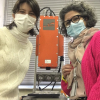Thermo Fisher Scientific and TransMIT GmbH Center for Mass Spectrometric Developments have announced a co-marketing agreement to promote the use of a mass spectrometry imaging (MSI) platform for spatial multi-omics applications in pharma and clinical labs. As part of the relationship, TransMIT will combine its proprietary scanning microprobe matrix-assisted laser desorption/ionisation (SMALDI) MSI and 3D-surface MSI technology with the high resolution accurate mass (HRAM) power of Thermo Scientific Orbitrap MS instrumentation. TransMIT’s AP-SMALDI5 AF ion source coupled with Orbitrap MS technology enables spatial distribution mapping of a variety of molecules such as biomarkers, metabolites, peptides or enzymatically-digested proteins by their molecular masses. This approach can be applied to omics applications such as metabolomics, lipidomics, proteomics, glycomics and to pharmaco-kinetic studies in a variety of tissues.
“This co-marketing agreement will provide integrated solutions for mass spectrometry imaging, offering a label-free approach to map the distribution of a wide range of both known and unknown compounds directly sampled from biological tissue”, said Jim Yano, senior director, life sciences mass spectrometry portfolio management, chromatography and mass spectrometry, Thermo Fisher Scientific. “Due to its high performance in spatial resolution, TransMIT’s AP-SMALDI5 AF ion source is the perfect match for the high mass resolution and accurate mass capabilities of the Orbitrap MS instrumentation.”
Professor Bernhard Spengler, director, TransMIT Center for Mass Spectrometric Developments, said, “Our AP-SMALDI5 AF ion source coupled with Thermo Fisher’s Orbitrap technology create an MSI platform for high spatial resolution along with high mass resolution and mass accuracy. The AP-SMALDI-Orbitrap setup enables scanning of tissue samples or 3D objects with the pulsed laser beam of 5 μm spot size routinely without oversampling, providing a powerful solution for drug development and spatial multi-omics applications.”










